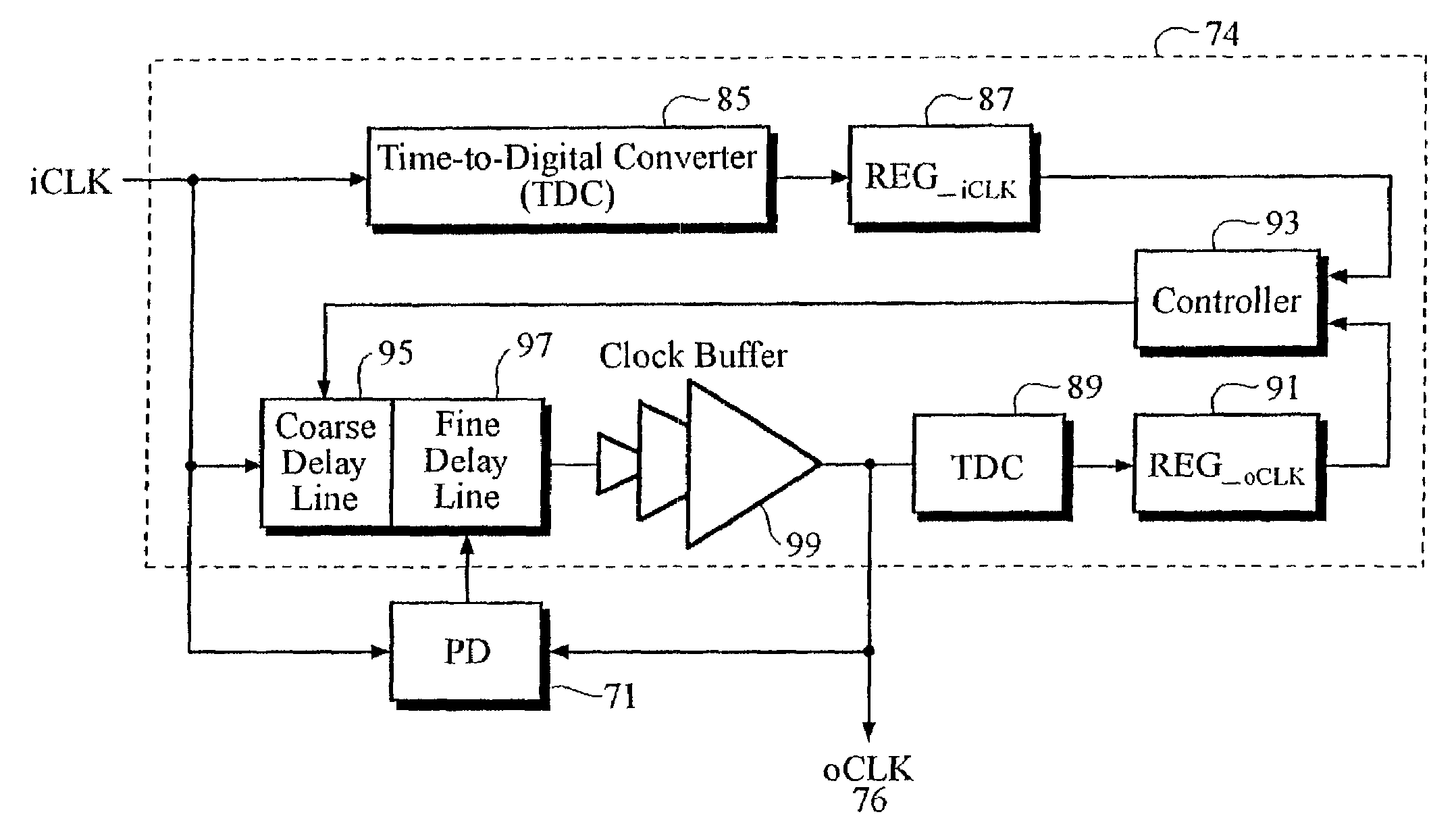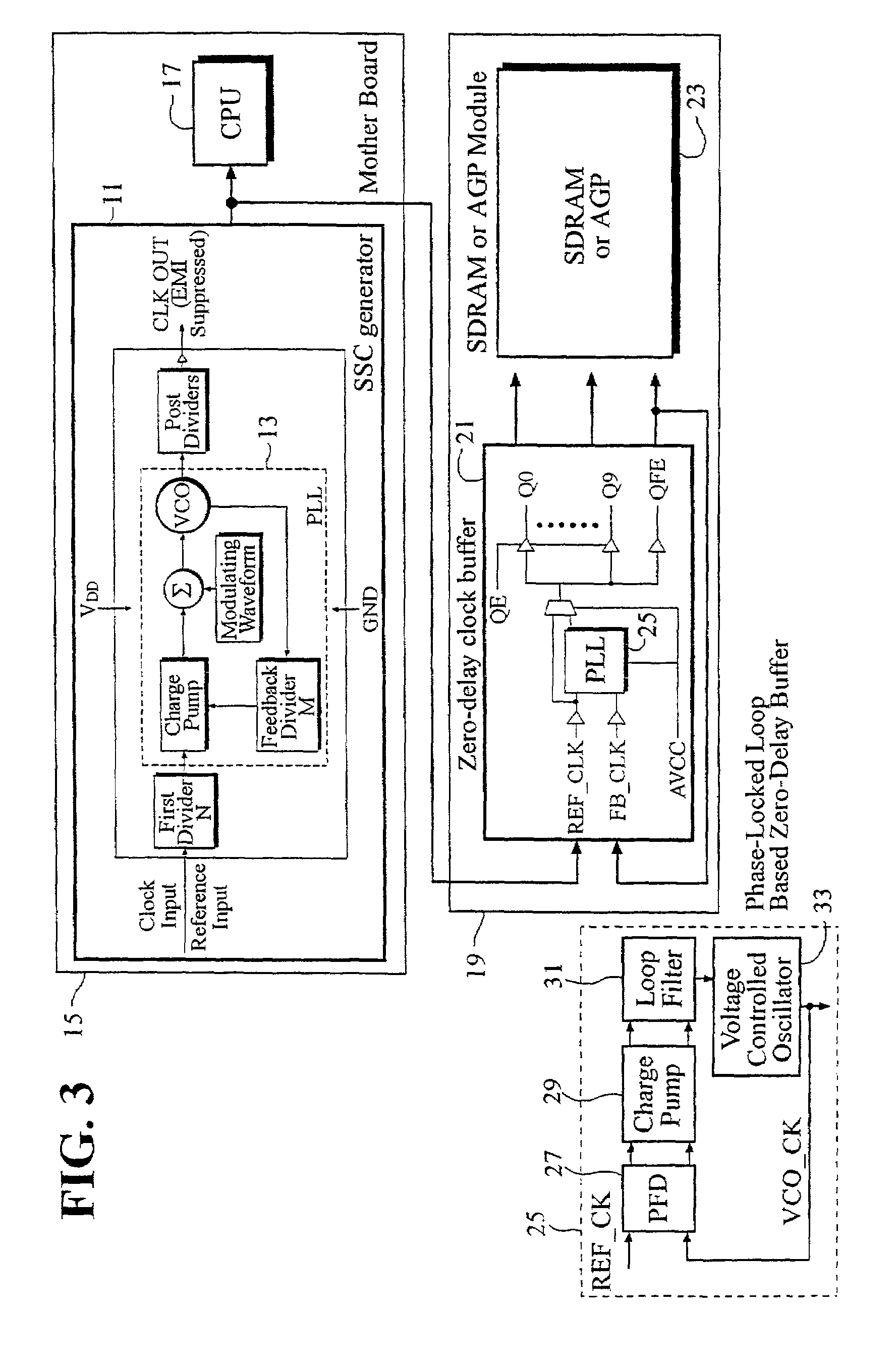Zero-delay buffer circuit for a spread spectrum clock system and method therefor
a spread spectrum clock and buffer circuit technology, applied in the direction of generating/distributing signals, digital transmission, pulse automatic control, etc., can solve the problems of jitter problem, skew problem in the related art ssc technique, and improvement of the emi limit clock frequency in the related ar
- Summary
- Abstract
- Description
- Claims
- Application Information
AI Technical Summary
Benefits of technology
Problems solved by technology
Method used
Image
Examples
Embodiment Construction
[0048]FIG. 8 illustrates a block diagram of a spread spectrum clocking (SSC) clock system circuit according to a preferred embodiment of the present invention. A motherboard 83, a SSC generator 78, a PLL circuit 81 and a CPU 77 are included. A peripheral board 75 includes a zero-delay clock buffer circuit 68 having a delay-locked loop (DLL) circuit 69. The zero-delay clock buffer circuit 68 receives a frequency-modulated clock signal from the SSC generator 78 and outputs an output clock signal to a peripheral device (e.g., SDRAM, accelerated graphics port, etc.) 76. The DLL circuit 69 includes a phase detector 71, a charge pump 72, a loop filter 73, and a voltage controlled delay-chain (VCDC) circuit 74
[0049]FIG. 9 illustrates a block diagram of the voltage controlled delay-chain (VCDC) circuit 74 according to the preferred embodiment of the present invention. The VCDC circuit 74 includes a first time-to-digital converter (TDC) 85 coupled to a first register 87, and a second TDC 89 ...
PUM
 Login to View More
Login to View More Abstract
Description
Claims
Application Information
 Login to View More
Login to View More - R&D
- Intellectual Property
- Life Sciences
- Materials
- Tech Scout
- Unparalleled Data Quality
- Higher Quality Content
- 60% Fewer Hallucinations
Browse by: Latest US Patents, China's latest patents, Technical Efficacy Thesaurus, Application Domain, Technology Topic, Popular Technical Reports.
© 2025 PatSnap. All rights reserved.Legal|Privacy policy|Modern Slavery Act Transparency Statement|Sitemap|About US| Contact US: help@patsnap.com



